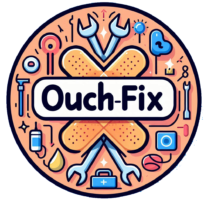Chronic pain is something millions of people around the world deal with every day. Whether it comes from injuries, arthritis, fibromyalgia, nerve issues, or simply the natural aging process, living with constant discomfort can feel exhausting. While there’s no single cure that works for everyone, one powerful tool often gets overlooked—exercise.
It may sound surprising, but regular movement can ease pain, strengthen your body, and improve your overall quality of life. And the best part? You don’t need an expensive gym membership or fancy equipment to get started.
In this guide, we’ll break down the science behind exercise and chronic pain, explore different types of safe workouts, share tips for creating a personalized plan, and give you practical steps to make exercise a lasting part of your pain management journey.
Why Exercise Works for Chronic Pain
When you’re in pain, moving your body might be the last thing you feel like doing. But research shows that staying active is one of the most effective, drug-free ways to manage pain. Here’s why:

- Natural pain relief: Exercise stimulates endorphin production—your body’s own “feel-good” chemicals that reduce pain signals.
- Stronger support system: Building muscle strength and flexibility helps protect your joints and decreases stress on them.
- Reduced inflammation: Regular activity lowers inflammatory markers, which often play a big role in chronic pain.
- Better energy: At first it may feel draining, but consistent movement actually boosts long-term energy levels.
- Improved sleep: Quality rest helps your body repair and makes daily pain easier to handle.
- Mood boost: Physical activity reduces stress and anxiety, which often make pain feel worse.
👉 Example: Many patients with chronic back pain report that even light daily walking helps reduce stiffness and improves their mood. What starts as a 10-minute walk can gradually build into a routine that makes daily tasks easier and less painful.

Also Read: How can Yoga Help in Maintaining Wellness and Reducing Aches?
What the Research Says
You don’t just have to take our word for it—science strongly supports exercise as a pain management strategy.
- A review in The Journal of Pain looked at 36 studies and found that exercise consistently reduced pain and improved mobility in people with musculoskeletal conditions.
- A study in Arthritis Care & Research showed that exercise eased pain and boosted function in people with knee arthritis.
- Research published in the Annals of Internal Medicine reported that aerobic exercise and strength training helped individuals with fibromyalgia feel less pain and fatigue.
Simply put: across multiple studies and conditions, exercise is proven to make a real difference.
(For more scientific background, you can explore resources from The National Institutes of Health and Arthritis Foundation.)
What Type of Exercise Is Best?
There’s no universal “perfect” exercise for chronic pain—what works depends on your condition, mobility, and personal preference. However, some low-impact activities are widely recommended because they’re gentle on the joints while still providing big benefits:

- 🚶 Walking – Simple, free, and effective for overall health.
- 🏊 Swimming or water aerobics – Buoyancy supports your body, reducing stress on joints.
- 🚴 Cycling (indoor or outdoor) – Builds leg strength without heavy impact.
- 🧘 Yoga – Improves flexibility, posture, and relaxation.
- ✨ Tai chi – A slow, meditative practice great for balance and stress relief.
- 💪 Pilates – Strengthens your core, which supports your back and posture.
Tips to keep in mind:
- Start slow and increase intensity gradually.
- Always warm up and cool down.
- Listen to your body—mild discomfort is okay, sharp pain is not.
- Mix different types of workouts to prevent boredom and work different muscle groups.

Also Read: How do Meditation Techniques Contribute to Pain Relief?
Creating a Plan That Works for You
The key to long-term success isn’t following a one-size-fits-all program—it’s building a plan that works for your body and lifestyle.

Here’s how to get started:
- Consult your doctor or pain specialist – They can guide you on what’s safe and effective for your condition.
- Set realistic goals – Even 10 minutes a day is a win if you’re starting from zero.
- Balance different types of exercise:
- Cardio (walking, swimming, cycling) → builds stamina.
- Strength training (resistance bands, bodyweight exercises) → supports joints.
- Flexibility/mobility (yoga, stretching) → reduces stiffness.
- Functional movement → makes daily activities easier.
- Track your progress – Use a journal or fitness app to stay motivated.
- Be patient – Improvements may take weeks, but consistency pays off.
👉 Case Study Example: A 55-year-old woman with osteoarthritis started with just 10 minutes of chair yoga three times a week. Over six months, she built up to daily 30-minute walks and light strength training. Not only did her pain decrease, but she also reported better sleep and reduced reliance on medication.
Tips for Getting Started
Starting something new can feel intimidating—especially if you’re already in pain. These strategies can help:
- Check with your doctor first – Always rule out movements that could worsen your condition.
- Set small, achievable goals – For example, “I’ll walk for 5 minutes after lunch.”
- Choose something enjoyable – You’re more likely to stick with dancing than running if you hate running.
- Treat it like an appointment – Put workouts on your calendar.
- Find support – Join a class, partner with a friend, or use online communities for motivation.
- Stay flexible – Some days will be harder than others. Adjust without guilt.
A Powerful Tool in Your Pain Management Toolkit

Living with chronic pain is tough, but exercise gives you control. Unlike medication, it comes with zero side effects (other than maybe sore muscles at first) and offers a wide range of benefits—from reducing pain to improving mood and boosting energy.
The most important thing to remember is that progress may feel slow, but every step counts. Be kind to yourself, stay consistent, and celebrate small wins.

Also Read: How does Sleep Quality Affect Pain Levels and Overall Health?
About Novus Spine & Pain Center
At Novus Spine & Pain Center in Lakeland, Florida, Dr. Torres and his team are dedicated to helping people manage chronic pain with advanced, personalized care. Their approach goes beyond medications—focusing instead on comprehensive treatment options, the latest technology, and compassionate support.
Our mission is simple: To help people live their best life by delivering expert care, compassion, and respect—every step of the way.
Learn more at Novus Spine & Pain Center.
Frequently Asked Questions (FAQs)
Q1. Is exercise safe if I have chronic pain?
Yes, but you should always check with your doctor before starting. Begin with low-impact activities and gradually build up.
Q2. How often should I exercise for chronic pain relief?
Aim for 30 minutes of moderate activity most days of the week, but even short sessions can help.
Q3. What if exercise makes my pain worse?
Mild soreness is normal, but sharp or severe pain is not. If that happens, stop and consult a healthcare provider.
Q4. Can exercise replace medication for chronic pain?
For some people, yes—though often it works best alongside other treatments recommended by your doctor.
Q5. Which is better for pain: cardio or strength training?
Both are beneficial. Cardio helps stamina and mood, while strength training supports joints and prevents injury.





